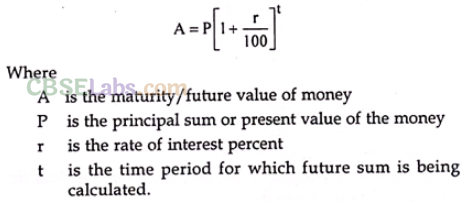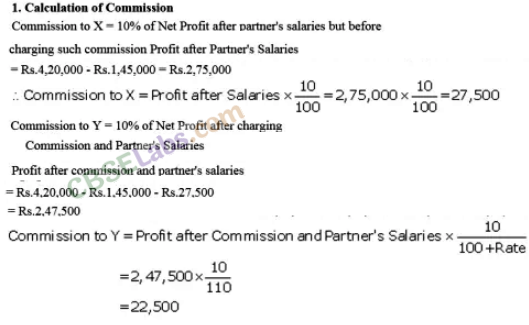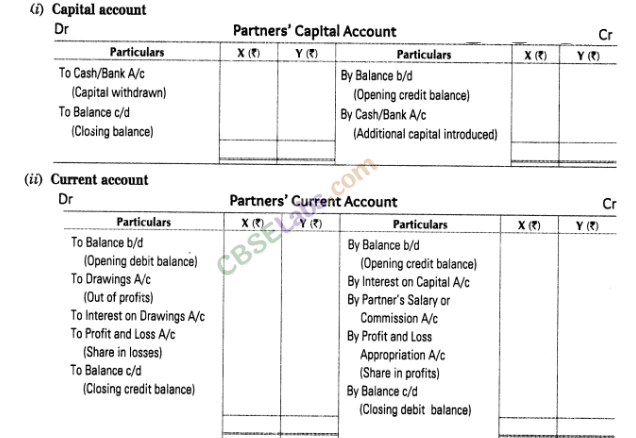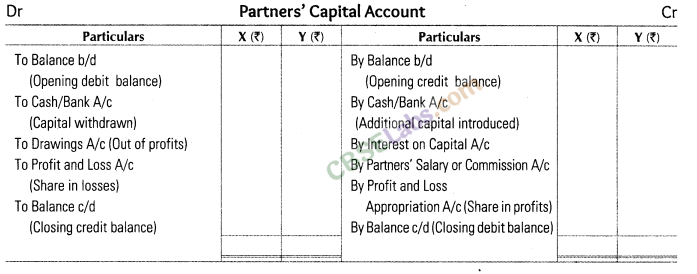Accounting for Not-for-Profit Organisation – CBSE Notes for Class 12 Accountancy
CBSE Notes CBSE Notes Accountancy NCERT Solutions Accountancy
Topic1: Concepts of Partnership and Partnership Deed
1. Partnership According to Section 4 of the Indian Partnership Act, 1932, ‘Partnership is defined as, ‘the relation between persons who have, agreed to share the profits of a business carried on by all or any of them acting for all’.
2. Nature of Partnership Partnership is a separate business entity from accounting point of view, but from a legal viewpoint, partnership firm is not a separate legal entity from its partners.
3. Features of Partnership
(i) Two or more persons (ii) Agreement
(iii) Business (iv) Mutual agency
(v) Sharing of profits and losses (vi) Liability of partnership
(vii) Management and control (viii) Registration
4. Partnership Deed It is a document which contains the terms and conditions of partnership agreement.
A firm should have a partnership deed because:
(i) It regulates the rights, duties and liabilities of the partners.
(ii) It avoids disputes in future by acting as a proof.
5. Accounting Rules Applicable in the Absence of Partnership Deed
(i) Sharing of profits and losses – Equally.
(ii) Interest on capital – Not allowed.
(iii) Remuneration or salary to the partners – Not allowed.
(iv) Interest on partner’s loan – Allowed @ 6% per annum.
(v) Interest on drawings – Not charged.
Topic 2: Computation of Appropriation Items and Charge Items
1. Interest on Capital Interest on capital is allowed to compensate partners for contributing capital to the firm. It is paid only if the same has been provided for in the partnership.
![]()
JOURNAL
(i) Interest on Capital A/c Dr
To Partners Capital/Current A/c
(ii) Profit and Loss Appropriation A/c Dr
To Interest on Capital A/c
Different cases related to interest on capital:
(i) When partnership deed is silent-Not allowed
(ii) When partnership deed provides that interest on capital is to be allowed.
There are three possible conditions:
(a) In case of loss Not allowed.
(b) In case of sufficient profit Interest on capital is allowed in full.
(c) In case of insufficient profit Interest on capital is allowed proportionately to the extent of profits. In this case profits are distributed in capital ratio.
(iii) If interest on capital is to be provided as a charge, it is allowed in full irrespective of profit or losses.
NOTE
(i) Interest on additional capital will be calculated for the period it remained with the firm, i.e. from the date of introduction of additional capital to the last day of accounting year.
If Opening Capital is not given, it can be calculated as:
Opening Capital = Closing Capital + Drawings – Profits – Additional Capital
(ii) Interest on capital is calculated on the opening balance of the capital for the full year.
2. Interest on Partner’s Drawings The amount withdrawn by partners in cash or in kind for their personal use in anticipation of profits, is termed as drawings. When the partnership deed is silent, no interest on drawings is charged. Interest on drawings is calculated with reference to time period for which money was withdrawn. Interest on drawings in different cases is calculated as follows:
(i) If a partner withdraws a fixed amount in the beginning, middle and end of each period.

Value of time under different circumstances will be as under:

(ii) When an unequal amount is withdrawn at different dates, the interest on drawings is calculated with the help of
(a) Simple method
(b) Product method
![]()
(iii) If the date of withdraw is not given, then the interest on total drawings for the year is calculated for a six month period on an average basis.
3. Accounting Treatment of Salary or Commission to a Partner
Salary or commission to a partner is to be allowed if the partnership agreement provides for the same. Salary or commission to a partner is an appropriation out of profits and not a charge against the profits, i.e. they are to be allowed only if there are profits and hence, must be transferred to the debit of profit and loss appropriation account and not to the debit of profit and loss account.
Commission may be allowed as a percentage of net profit before charging such commission or after charging such commission.

NOTE:
Charges such as interest on partner’s loans, manager’s salary and commission must be deducted from profit before transferring it to profit and loss appropriation account.
4. Accounting Treatment of Interest on Partner’s Loan to the Firm Interest on partner’s loan is a charge against the profits and not an appropriation out of profits and hence, must be transferred to the debit of profit and loss account and not to the debit of profit and loss appropriation account.
NOTE:
(i) If there is an agreement as to the rate of interest, partner is entitled to an interest on loan at an agreed rate of interest. If there is no agreement as to the rate of interest, partner is entitled to interest on loan @ 6% per annum.
(ii) Interest on partner’s loan is not recorded in the partner’s capital/current account but it should be recorded to the credit side of partner’s loan account if it is outstanding.
5. Rent Paid to a Partner It is a charge against the profit and not an appropriation out of profits. It is, therefore, debited to profit and loss account and credited to partner’s current account in case of fixed capitals or to partner’s capital account, when capitals are fluctuating.
Topic 3: Maintenance of Capital Accounts of Partners: Fixed and Fluctuating Capital
1. Fixed Capital Under this method, the capitals of the partners shall remain fixed, unless additional capital is introduced or a part of the capital is withdrawn, as per the agreement among the partners.
Two accounts are maintained under this method:
Capital accounts and current accounts.
Transactions related to introduction and withdrawal of capital are recorded in capital account, rest are recorded in current account.
Capital account will always have credit balance and current account may have credit or debit balance.

2. Fluctuating Capital Under this method, only one account, i.e. capital account of each partner is maintained.
All transactions are recorded in capital accounts. Generally, capital account has credit balance but in exceptional cases it may have debit balance due to heavy losses or withdrawals.
